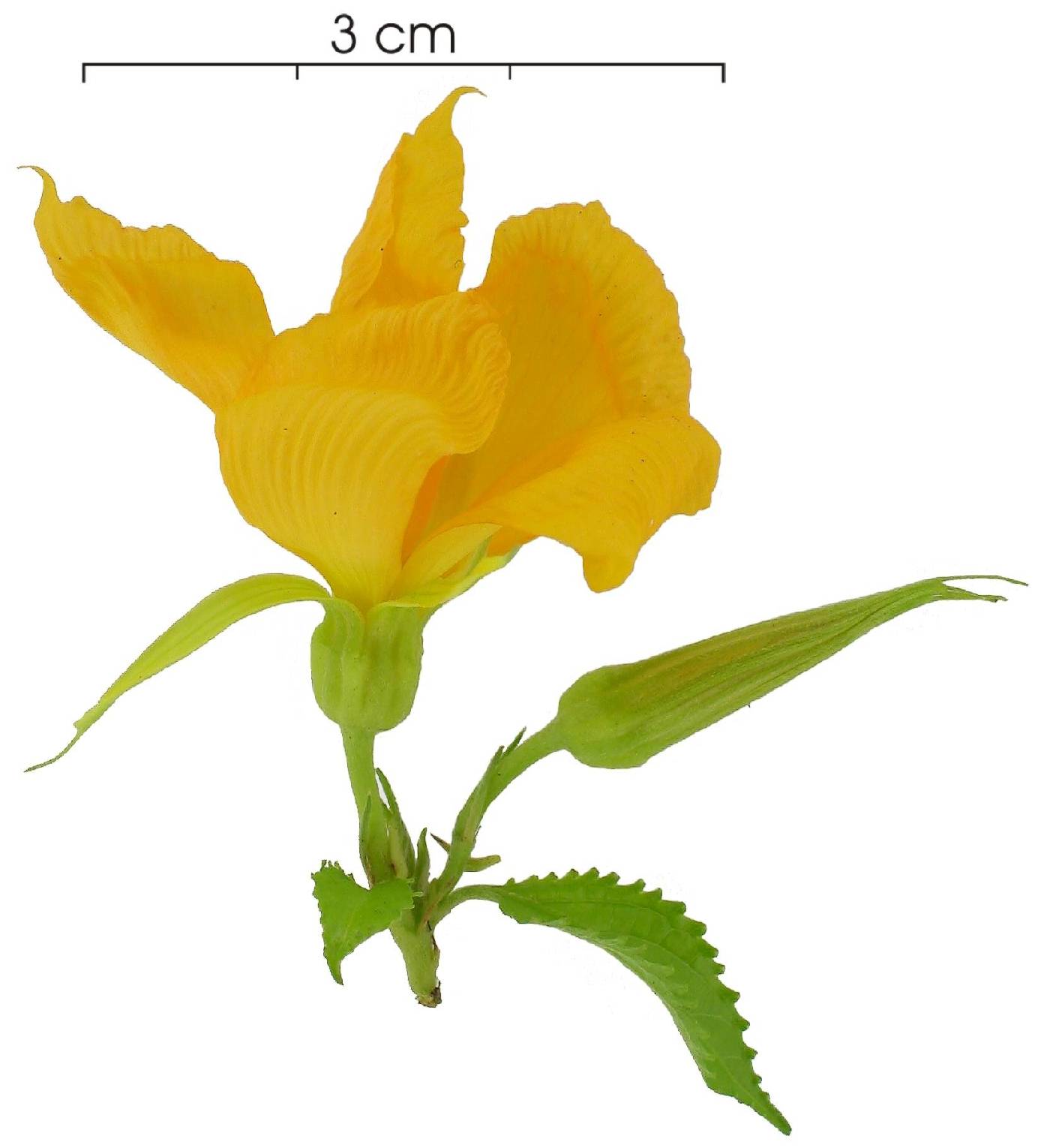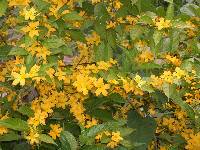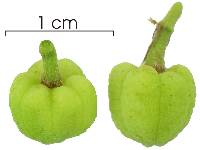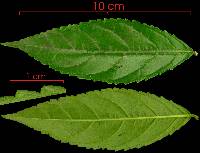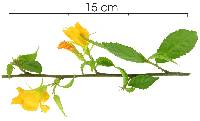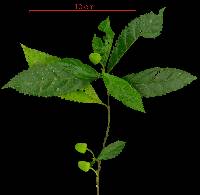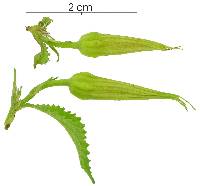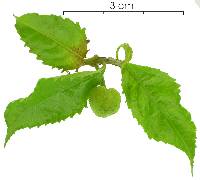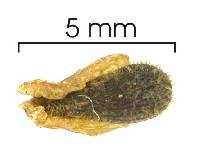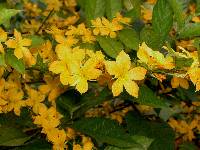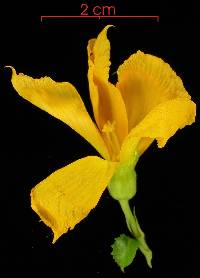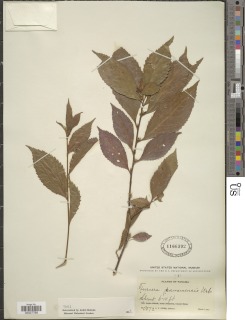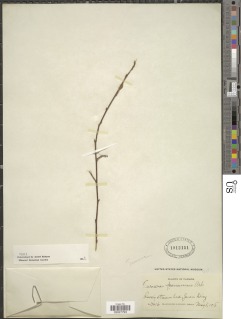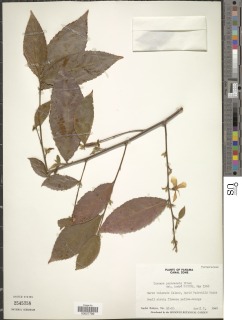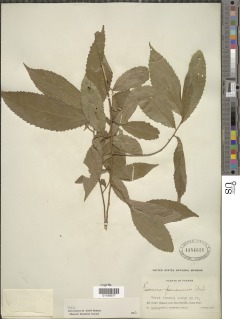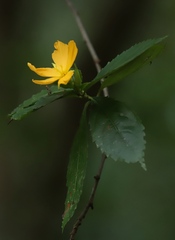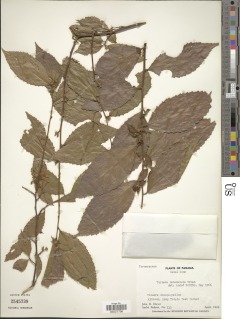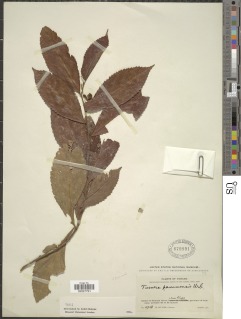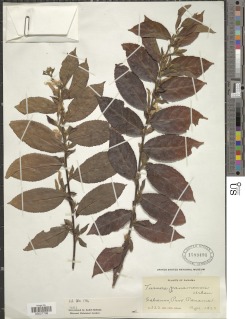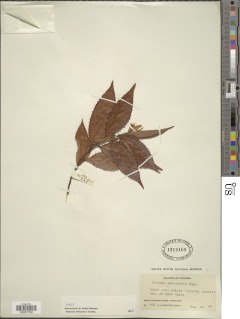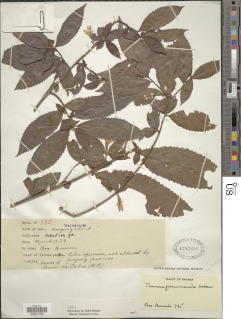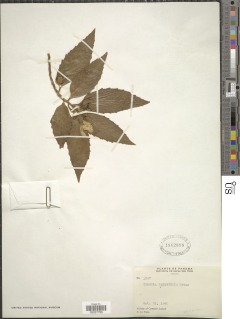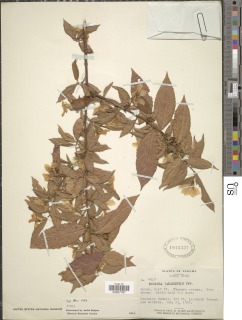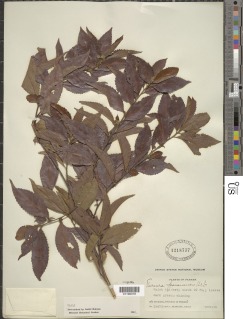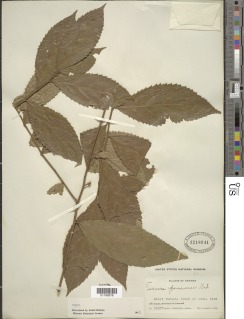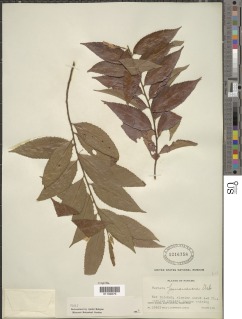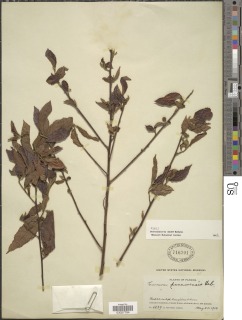

|
|
|
|
Family: Turneraceae
Flores de lluvia
|
Description: A small treelet or shrub, no more than 3 m tall. Leaves are alternate, regularly spaced along the branches, in a flat plane, with conspicuous sharp teeth. The tip of each tooth in upturned slightly, and has a small, whitish gland. The gland is barely visible without a lens. Reproduction: Produces bright orange flowers, 2-3 cm across, a single flower at the end of each branch, usually after rains in the dry season. Fruits ??? Distribution: Nowhere common, there are a few on Barro Colorado Island, and it's scarce but present in forests near Panama City. There are a few individuals in Gamboa. Similar Species: The most similar species is LK hybapr Hybanthus prunifolius, LK2 another forest shrub. Check the leaf teeth, look for the glands. Several Flacourtiaceae also have alternate, toothed leaves, for instance, LK casear Casearia arguta. Shrub, to 4 m tall; branches appressed-puberulent. Stipules subulate, to 4 mm long, subpersistent; petioles to 5 mm long, canaliculate above; blades +/- elliptic, acuminate, acute and decurrent at base, mostly 10-15 (18) cm long and 3.5-5 (6) cm wide, glabrate above, puberulent below, glandular-crenate; veins prominent; flowers 5-parted, solitary, on short, bracteate, axillary branches, heterostylous; sepals ribbed, long-acuminate, to 1.5 cm long; petals orange, 2-3.5 cm long, blunt at apex, inserted near throat of hypanthium, widely spreading at anthesis, caducous; stamens 5; filaments either to 6 mm or to 12 mm long, their respective styles to 8 mm or to 5 mm long; stigmas numerous. Capsules 3-valved, ovoid, 6-13 mm long, minutely tuberculate, brown at maturity; seeds numerous, fewer than 10 per valve, +/- oblong-curved, puberulent, striate, subtended by an aril, the aril collar-shaped, displayed on valves of open capsule. Croat 7335. Frequent in the forest, especially in the old forest, and along the shore. Flowers and fruits sporadically throughout the year. Plants flower in a distinct synchronous wave if a period of drought is followed by a heavy rain (R. Foster, pers. comm.). Distinguished by the orange flowers and glandular-crenate leaves. Known only from Panama, from tropical moist forest in the Canal Zone and Panama. |
|
|
|

